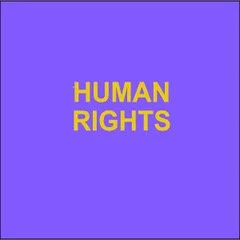By: Lauren Dunton, Jill Khadduri, Kimberly Burnett, Nichole Fiore, Will Yetvin
The number of people experiencing unsheltered homelessness, defined in this report as living in a place not meant for human habitation, has grown to more than 200,000 in recent years. That increase is driven by individuals who are not experiencing chronic homelessness. While not all individuals experiencing unsheltered homelessness reside in encampments, encampments have become emblematic of the rise in unsheltered homelessness. In particular, the number of unsheltered homeless individuals has increased since 2016. The problem is most acute in major cities, on the west coast, and in markets that have seen major spikes in housing prices. Even cities with declining unsheltered populations face pressure to address visible encampments in their communities. Exploring Homelessness Among People Living in Encampments and Associated Costs was launched as a joint effort between The U.S. Department of Housing and Urban Development’s (HUD’s) Office of Policy Development and Research and the Office of the Assistant Secretary of Planning and Evaluation at the U.S. Department of Health and Human Services (HHS). This study is intended to help policymakers and practitioners understand the nature of encampments, strategies for responding to encampments, and the costs associated with those approaches. The study offers a literature review, summaries of the four study sites, and a comprehensive final report documenting the full scope of the costs associated with the responses to encampments in the included communities. Underscored throughout the report is an understanding that a complex set of factors around housing precarity have contributed to the growth of encampments. Unsheltered homelessness is the tragic result of the country’s affordable housing crisis that stems from a combination of increasing rates of deep poverty and a lack of deeply affordable housing. Due to the impacts of structural racism, the affordable housing crisis is especially dire for Blacks and Latinos who are overrepresented among the homeless population. Within the homelessness system, shortcomings in emergency shelter policies and practices, a sense of community and safety within encampments, and a desire for autonomy and privacy contribute to some people’s preferences for encampments over shelters. The report shows that the four study sites have coalesced around a strategy that involves clearance (removing structures and belongings from encampments) and closure (requiring that people leave encampments) with support (resource-intensive outreach to connect residents with services and to ensure every resident has a place to go upon closure). Although this is the dominant strategy, outreach workers in at least one city highlight that this strategy exacerbates the challenges of moving residents to shelters or permanent housing, which research shows is the most cost-effective and humane strategy, long-term. The report also indicates that responding to encampments is resource-intensive for local governments, costing cities between $1,672 and $6,208 per unsheltered individual per year and requiring coordination across government and non-governmental actors. Since HUD funding is largely not being used for encampment related activities, city governments cover the vast majority of these costs out of their own budgets. This study was conducted before the start of the COVID-19 pandemic, which has likely worsened homelessness rates, while simultaneously increasing the urgency for finding safe housing for residents of encampments. At the same time, many homeless shelters have reduced capacity to abide by social distancing protocols, limiting options for those experiencing homelessness and potentially forcing more people into unsheltered homelessness and encampments. Future research on the characteristics and costs of encampments should integrate the perspectives of people with lived experiences in encampments. Research should also examine the racial inequities between those who live in encampments, how encampment residents are treated under the law, and who receives supports to enter shelters or housing. Finally, future research should seek to incorporate a fuller accounting of the cost to cities, including additional municipal costs (for example, from police, fire, and health departments), and the costs associated with residents’ trauma when faced with clearance and closure of encampments. This fuller accounting of the costs of encampments should also be compared to the cost of employing a Housing First approach to residents of encampments. Overall, this report reveals that communities need more resources and guidance for addressing encampments through a focus on outreach, engagement, and connection to housing with services. Suggested solutions in the report include expanding the capacity to place people experiencing homelessness into shelters and permanent housing. This suggestion aligns with the Administration’s belief in a Housing First approach that invests in homelessness prevention, rental assistance, supportive housing, and services to ensure stable housing acts as a platform for people to access employment, seek medical care, obtain care for behavioral health conditions like mental illness or addiction, and support children. This study provides useful information to help the field better understand a growing yet under-researched segment of the homeless population—information that we will incorporate into this Administration’s holistic vision for reducing homelessness.
Washington, DC: U.S. Department of Housing and Urban Development 2020. 78p.





















